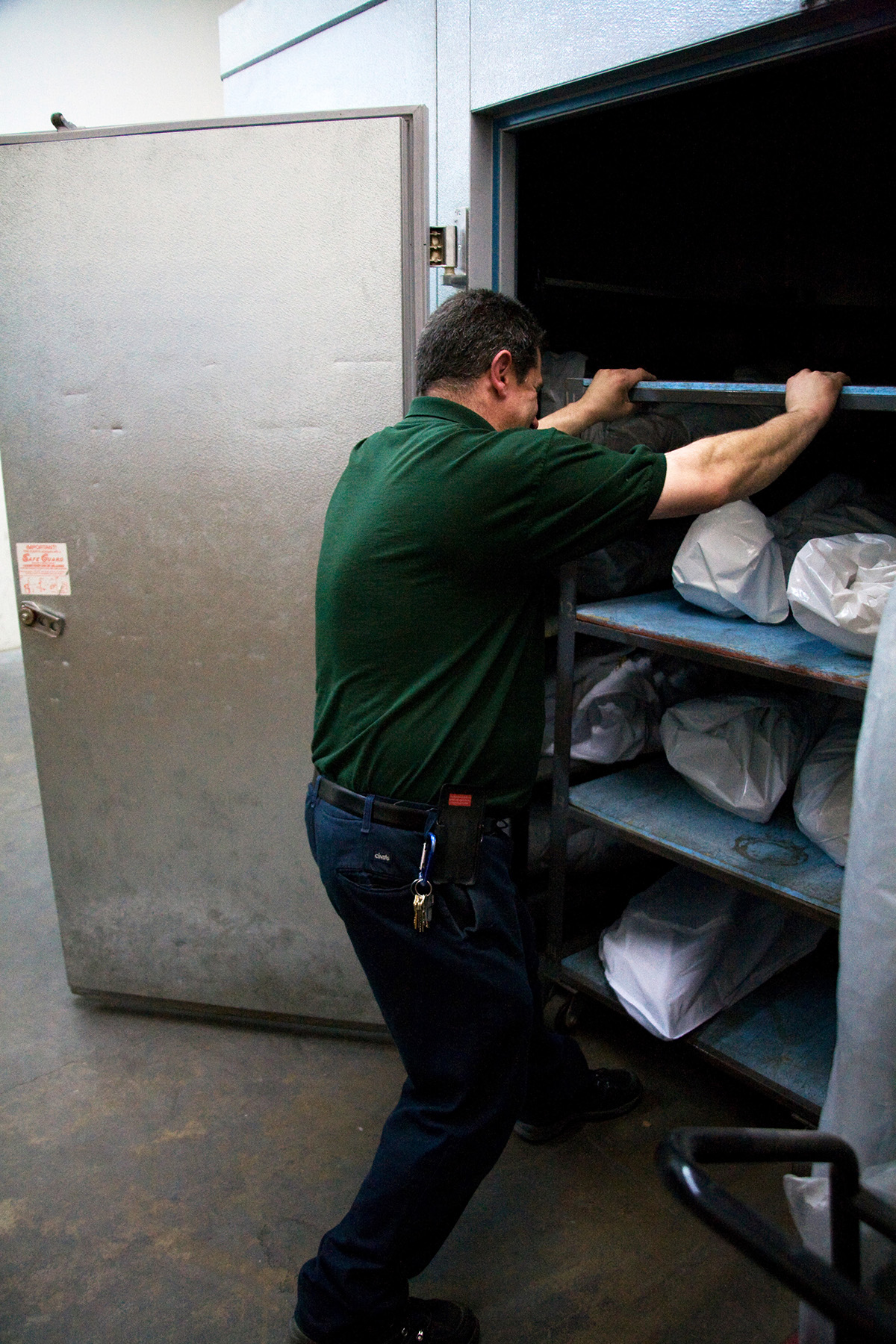
This is the view of the body cooler everything in white is a body, each body has its name and death date written in marker on the plastic sheath. This crematory is what is considered the cheap option in town. They will do any where from 15-35 cremations or more a week running two retorts almost all day every day.
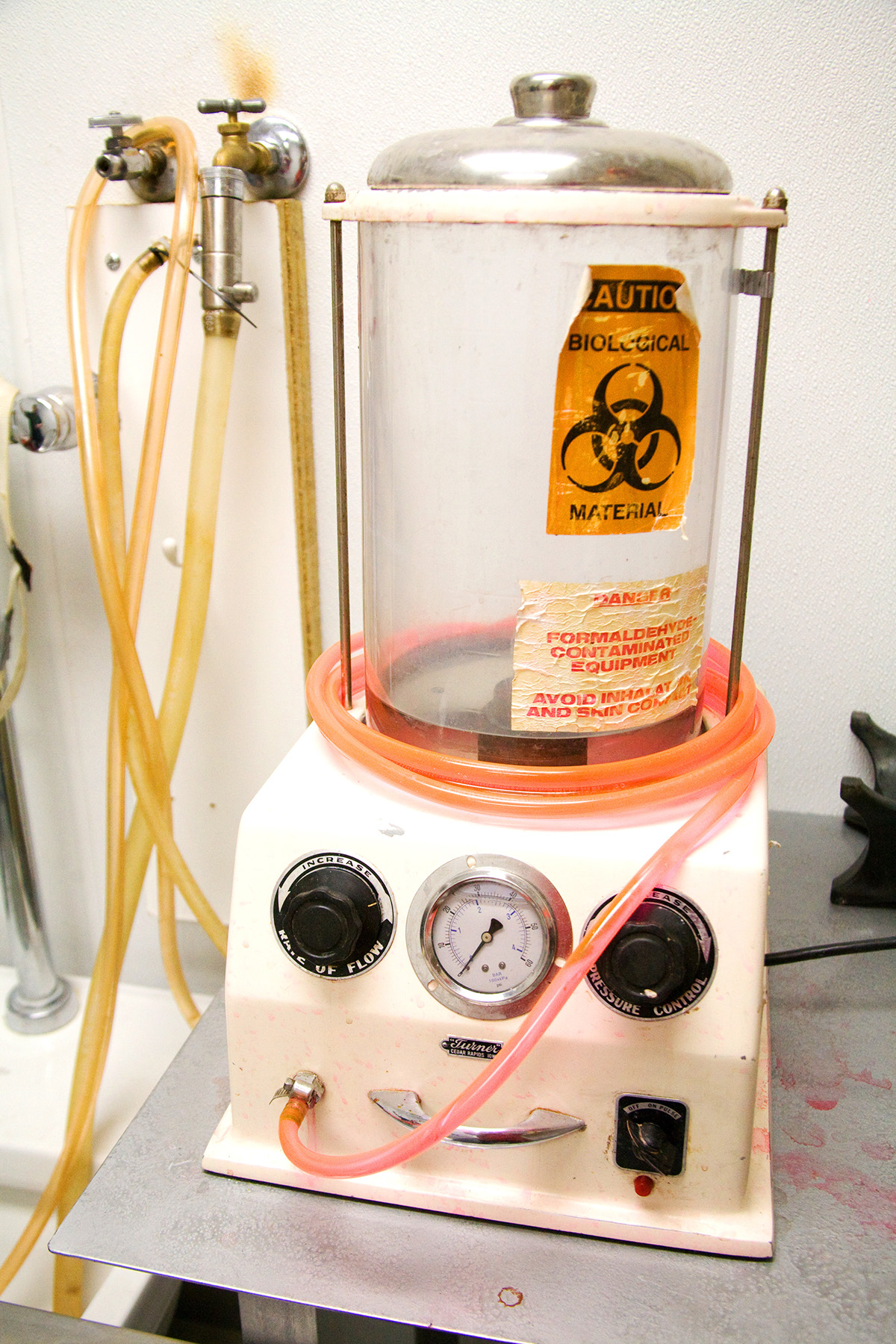
This is an antique embalming machine that is still in use. To properly circulate the fluids through the body it uses a pulsing action like a heart beat as to evenly distribute the various chemicals. If its pumps too hard it can destroy the veins.
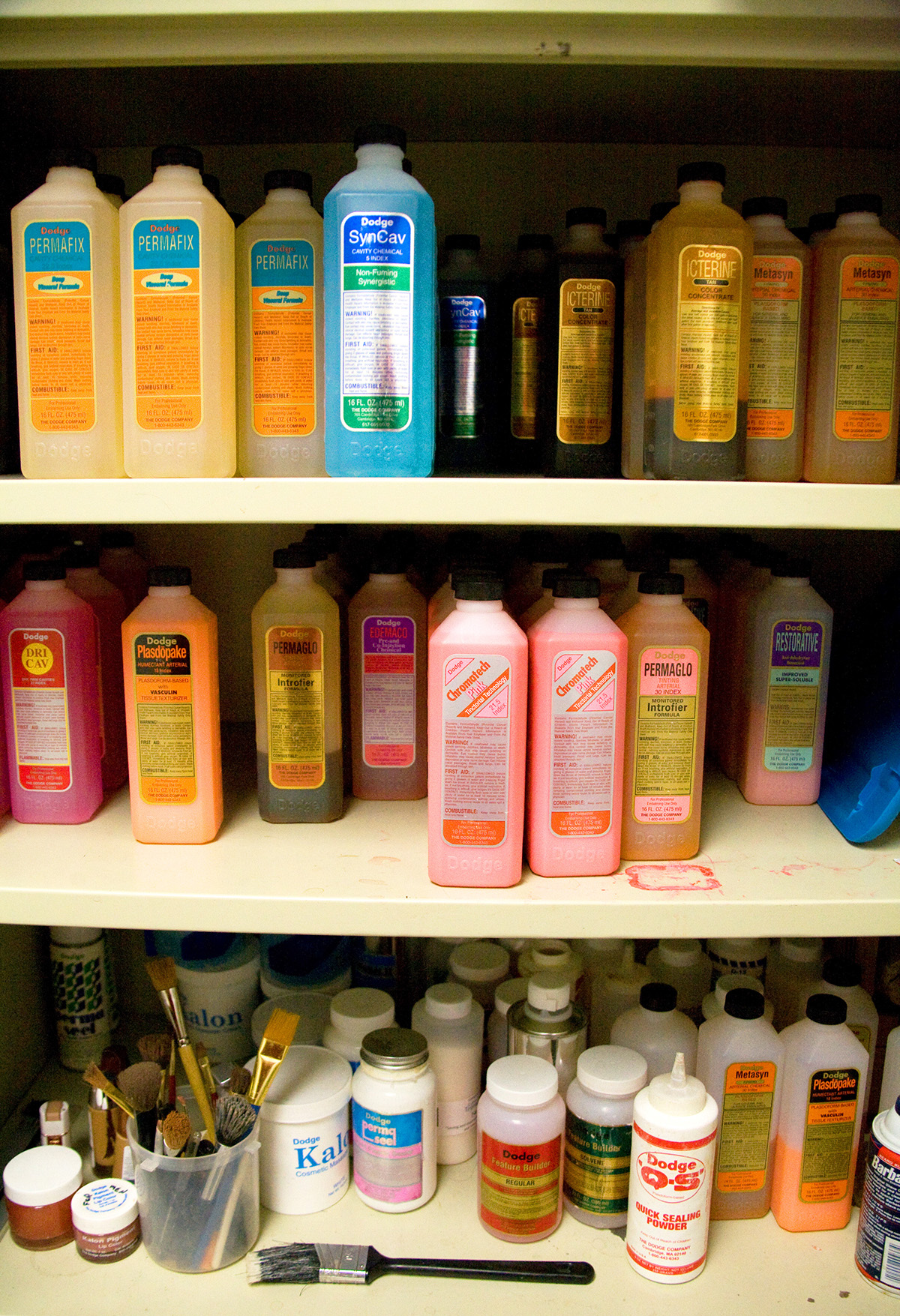
This is the chemical and supply closet. The bottles with bright milky colors are a dyed formaldehyde mixture, it actually colors the skin of a body from the inside out. The colors are carefully mixed by the embalmer to resemble a natural skin tone. Once the fluid starts being pushed through the body a visible change of the skin can be seen in 30 minutes or less. If done incorrectly the skin can become too pink or too orange and can look odd.
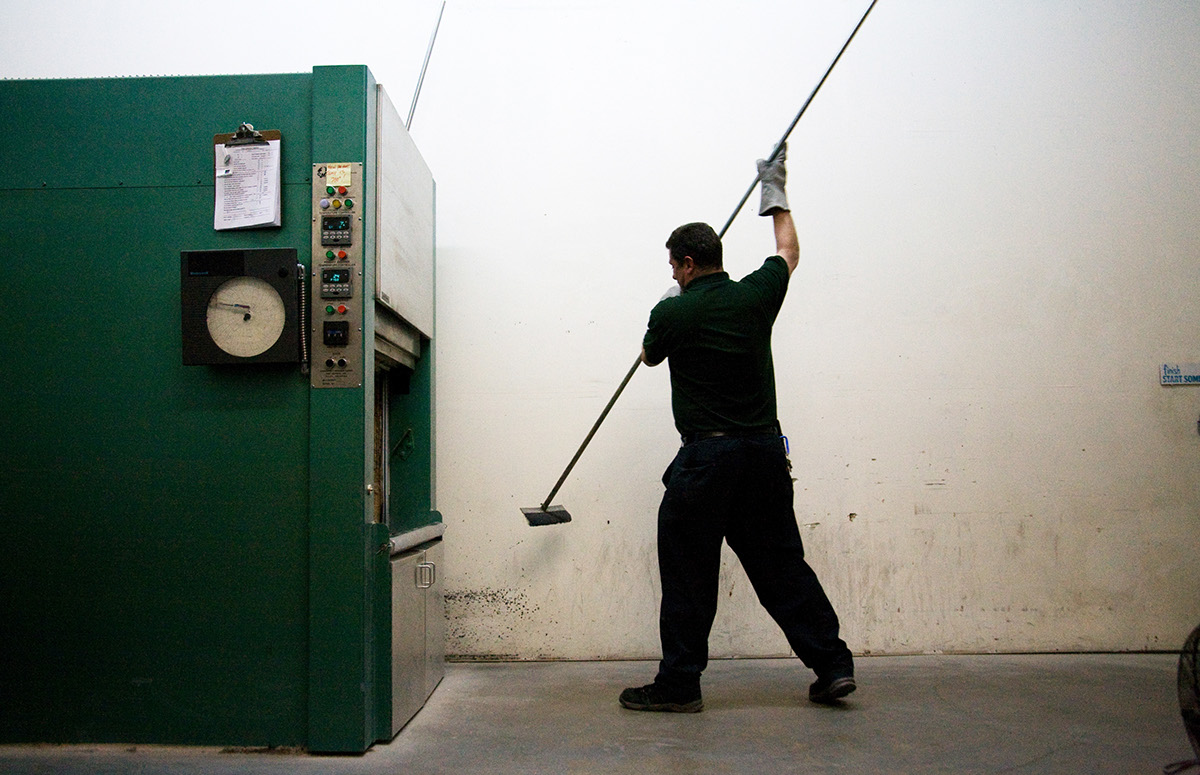
After each cremation is compleated the retort needs to be swept of ashes and bone fragments.
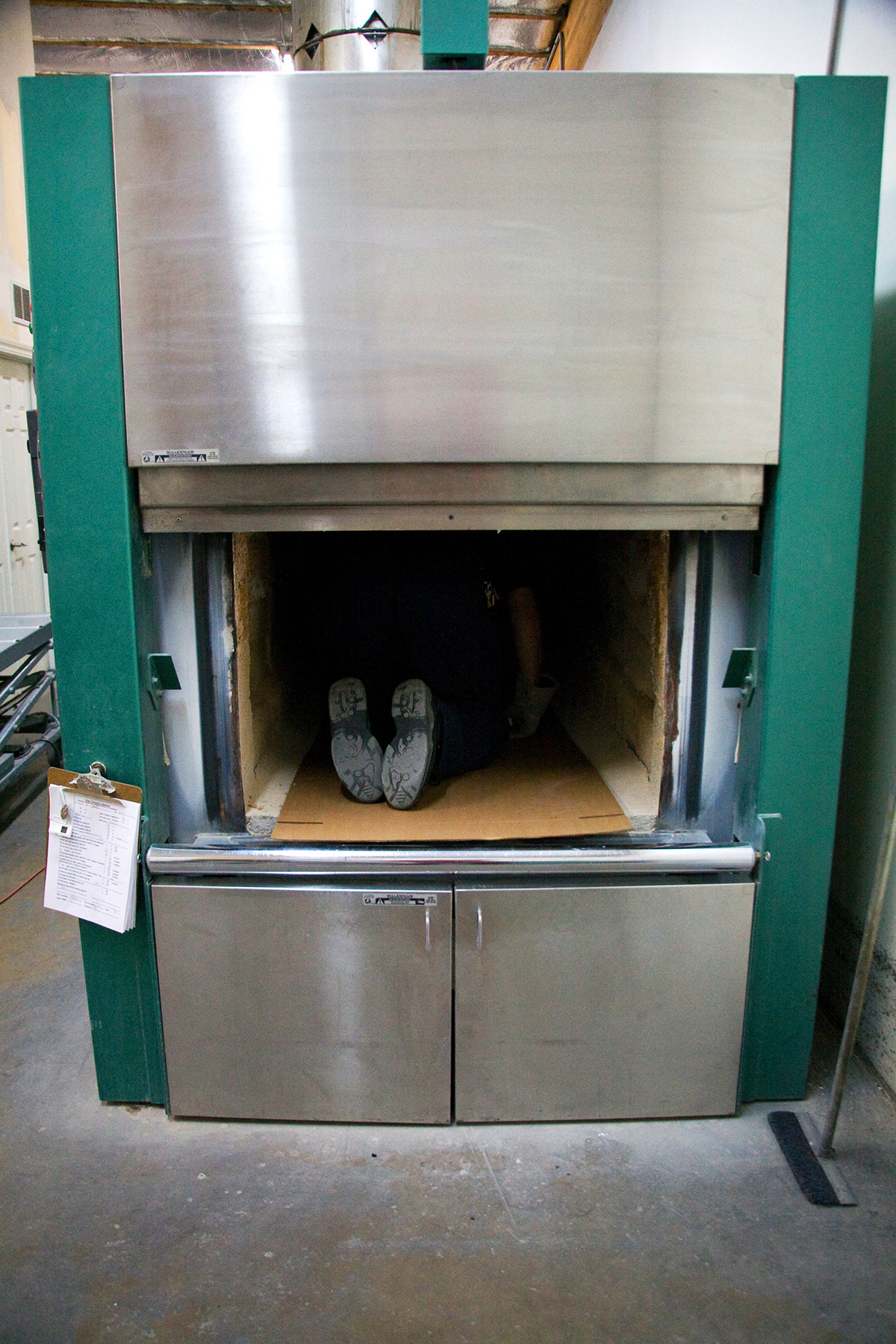
The retort needs to be as cleaned out as possible. The bricks lining the inside keep the heat in long after the burners have been turned off, but time is money and 120 degrees fahrenheit or not it needs to be done before the next cremation.
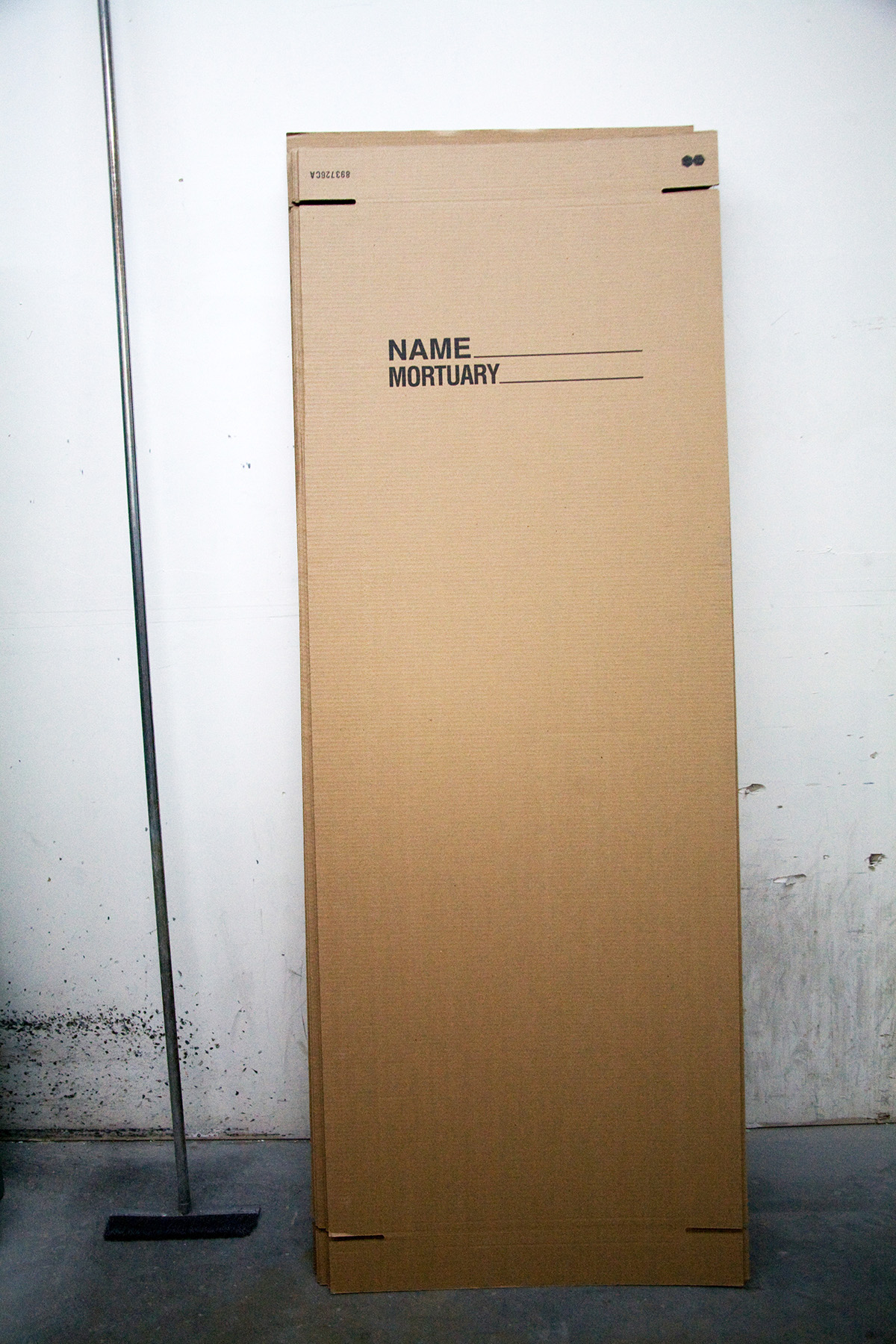
If you or your family do not want to pay for a cremation casket, which 99% of the population does not, this is what you are cremated in. It is folded and taped so it looks like a large shoe box with a lid. The body, clothes, plastic and anything you or your family wants with you that won't explode is then put in the box. It's labeled, dated and put in line for its turn in the retort.

Once done, the ashes and bone (which there is more large chunks than you would think) are put in a big silver pot that looks like something you would cook soup in. In the bottom is a large mixing blade. The pot is put on what is essentially a large steel blender looking device and the bones, teeth and what ever large bits that are left over are ground up into a fine ashy powder.

After being processed the ashes are bagged, tagged and boxed in a simple brown plastic container.
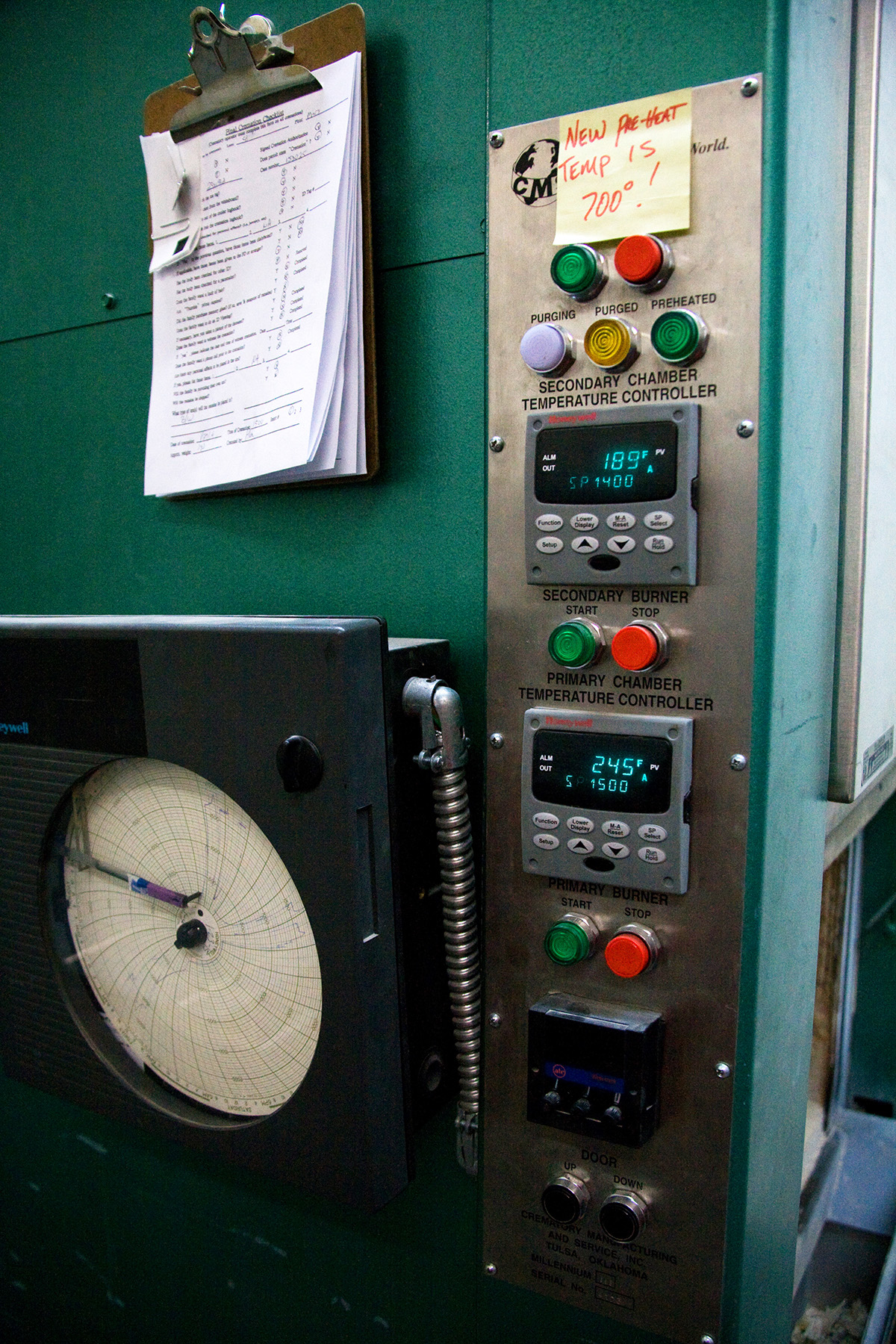
This is the control panel of the retort. The temperatures can fluctuate wildly depending on the size of the person. A larger person with more fat will burn much hotter and can cause a fire to erupt if not monitored very carefully. A smaller more condensed person will take longer but won't burn as hot. All pacemakers must be removed before cremation, their power cells act like explosive devices and can very badly damage the inside bricks or blow the door open.
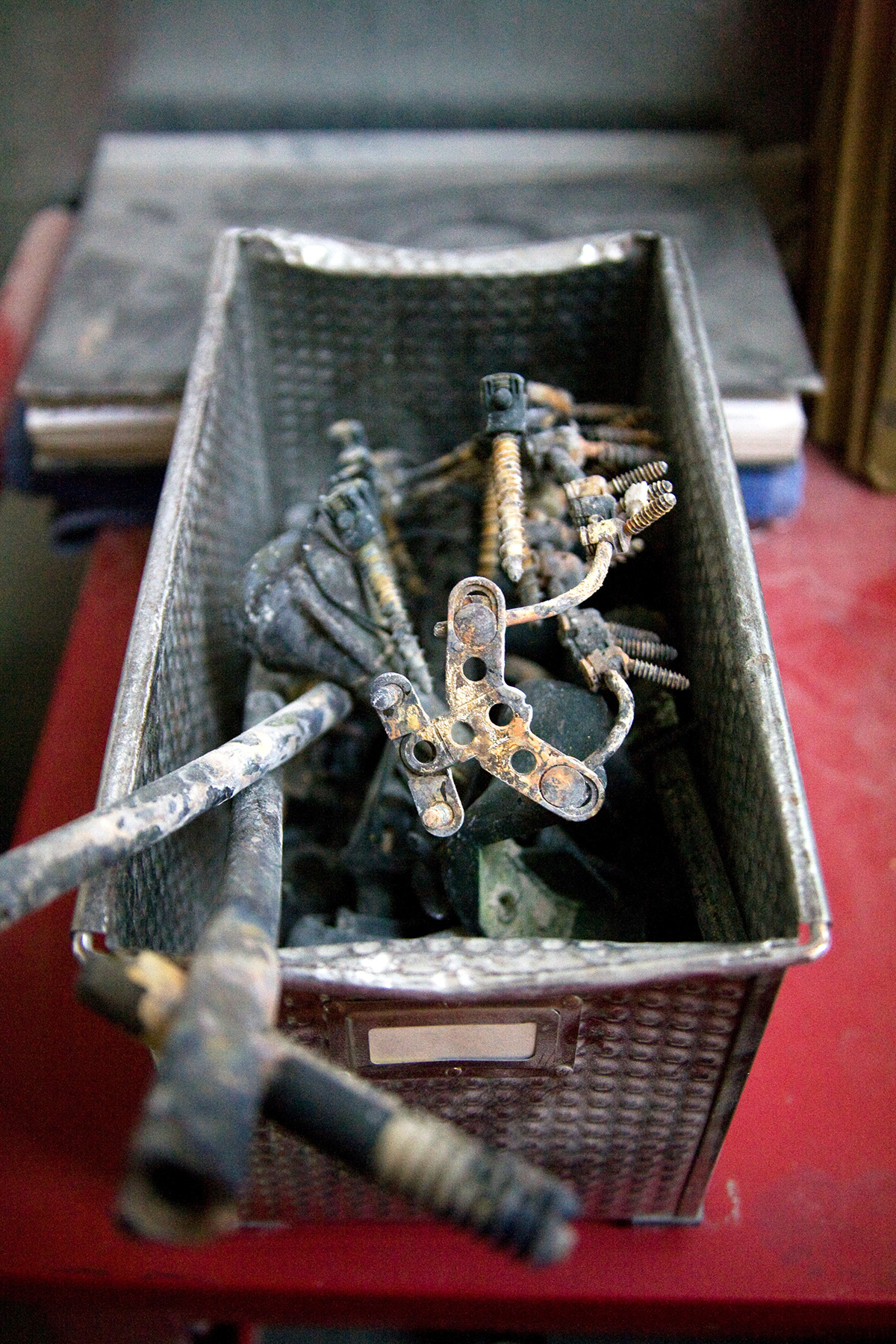
This is a box of implanted things from peoples bodies. Some things will melt away in the heat but larger things will not, gold and silver from teeth mostly disappear. Before the bone fragments and ash are processed all of the large items like this are removed, as you can see some of the bone will still cling to the surgical screws. Then a high powered magnet is run through the pieces to collect any smaller items like hospital gown snaps or zippers and the like.

This is where they do embalming, it is a room half the size of a normal bedroom. Many people have opted out of full funeral services in favor of the cheaper and quicker cremation. Those that choose it now days are mostly for religious reasons or because the deceased had pre-paid or asked for it in their will.
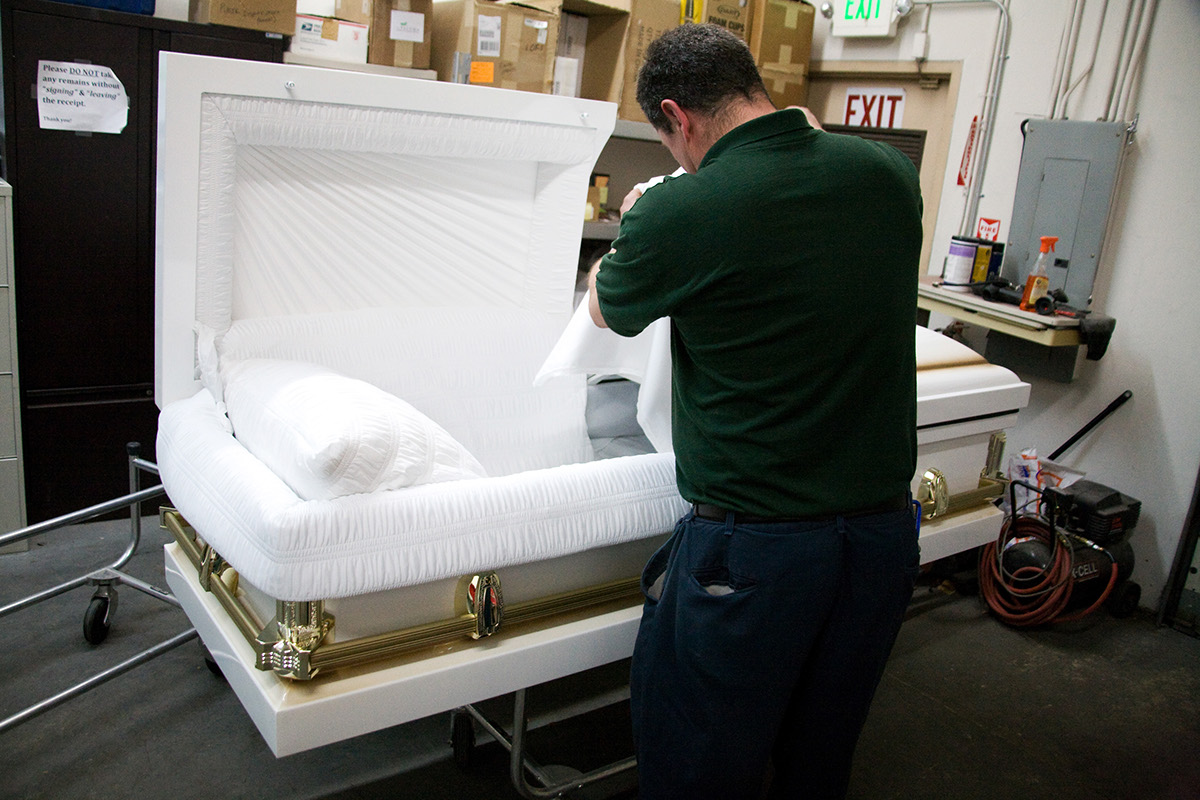
If you do go with a full service, your final resting place will be in a casket similar to this. Fluffy, clean and white interior with a weather and moisture proof seal on the lid surounded by airbrushed steel.
